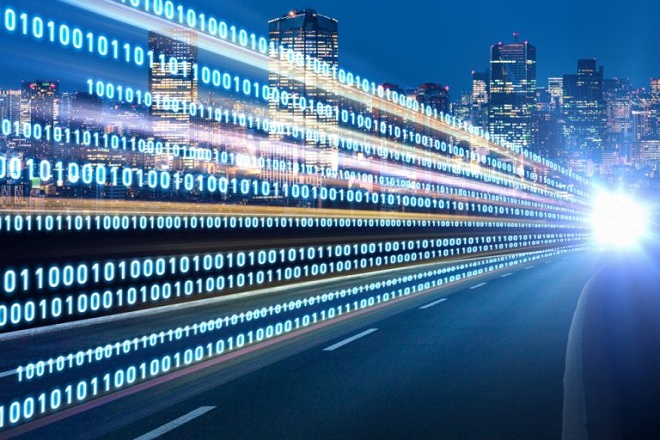As the world becomes more populous and people gravitate toward urban lifestyles, it is increasingly important to understand and predict infrastructure needs. Traffic monitoring systems are critical in that understanding and prediction. ANPR (Automatic Number Plate Recognition) cameras are ideal for understanding traffic flow. The data they collect can feed analytical tools that help us understand patterns, and historical patterns can help project future needs. This article examines the ways we can develop our understanding and projections and how plate-reading technology helps with the process. Adaptive Recognition has led this industry since its beginning and offers some of the most flexible and capable examples of plate-recognition devices available.

Automatic Tolling Systems
The safety and convenience benefits of an ANPR camera capturing license plate information as vehicles move along at steady highway speeds are well understood. It’s a vast improvement over toll collection systems where cars had to stop or slow to a crawl to pay tolls.
A perhaps less obvious benefit is that it’s a simple matter to add the ability to record the traffic density as it varies through the day, season and year and evolves through several years. Analyzing this information can provide planners with the basis for making reasonable projections of future infrastructure needs.
The Vidar ANPR cameras‘ high-speed (up to 300 km/h, or 185 MPH) plate-reading capability accounts for their popularity in automatic tolling applications.
Nationwide Traffic Monitoring System in Hungary
VËDA is the acronym (in the Hungarian language) for Hungary’s nationwide traffic monitoring system. This initiative works in cooperation with the EU directive to reduce fatal traffic accidents, employing nearly 300 fixed, portable and mobile ANPR cameras.
These cameras provide speed measurement and enforcement, red-light violation detection, wrong-direction or prohibited-entry violation detection, and other safety-related controls.
While pursuing these exemplary safety-related initiatives, which by the way, have greatly benefitted traffic safety, the traffic monitoring systems gather massive amounts of data that can provide insights into nationwide traffic patterns. The analysis of this information for daily, seasonal, and annual pattern changes is an excellent tool for understanding future needs for infrastructure and enforcement.
Here’s the whole story of how this system works, the equipment employed, and the results generated. Contact Adaptive Recognition’s experts to gain more insight into the possibilities for analyzing future needs,
Parking Garages and Lots

The world population is expected to grow from today’s nearly 8 billion souls to about 10 billion by 2050. Increasingly, people are opting for urban or suburban lifestyles, and own one, two, three, or more vehicles per family.
Suppose you own a parking facility in a population center. Would you be interested in projecting the parking requirements for the next twenty or thirty years? I’m pretty sure most owners would answer positively.
Next question: Have you built or converted your facility to full automation with ANPR cameras? If so, congratulations! You are accumulating the data you need to predict the market for parking capacity for the next few decades. You know the average number of contract users parking in your facility on weekdays and weekends, and you know how many drop-in parkers you have each day.
A statistical analyst can generate predictions of future needs by combining all this traffic monitoring system information with other population and business growth trends for your specific area. With good analytics at your fingertips, you can get a jump on your competition and be ready with appropriate capacity adjustments while they’re still guessing at tomorrow.
If you haven’t yet switched to an ANPR-based smart parking system, you can learn more about their benefits here.
Smart Cities

The whole idea behind the traffic monitoring systems used in smart cities is to better understand traffic flow, along with other data useful to city planners.
Among the challenges faced by smart city administrations are:
- Massive and continually growing amounts of data.
- Traffic congestion with continuing urbanization.
- Need for reliable identification of visitors.
- Unlinked data can be difficult to analyze.
The Globessey Data Server (GDS) is a middleware application developed by Adaptive Recognition to solve exactly such challenges as this, whether city-wide, nation-wide or worldwide. Since it can connect to databases with virtually unlimited size, its storage capacity is always expandable. At the same time, those connected to its front end can store and retrieve data efficiently.
The benefits of GDS, as related to the challenges we listed above, are:
- Massive amounts of data can be accommodated and manipulated for quick retrieval.
- Congestion-prone areas can be analyzed, and traffic flow into these areas can be controlled.
- Databases of habitual criminals and trouble-makers are accessible to all users.
- Since all of the data is in one system, capable data managers can manipulate it as necessary to get the most out of it.
While the world population increases relentlessly, so does urbanization and vehicle ownership. These three trends conspire to steadily increase the need for understanding traffic flow.
Traffic monitoring systems are the tools for better understanding traffic flow. The most capable and flexible systems rely on ANPR cameras since the data they collect can be used as input to any software or database.
Some of the specific applications of this technology we’ve discussed are:
- Automatic high-speed tolling systems.
- Nation-wide traffic management systems, such as the one in Hungary.
- Smart parking systems in large parking garages.
- Smart city applications.
- The GDS data management system to handle all the massive volumes of data collected by all these resources and make it usefully available
Adaptive Recognition has pioneered many of the most useful developments in license plate recognition technology since the company was founded in 1991. These developments have kept them consistently at the pinnacle of the industry. If you’re in a position where a better understanding of traffic flow is valuable to you, check out their website and contact their experts to discuss your unique needs.

